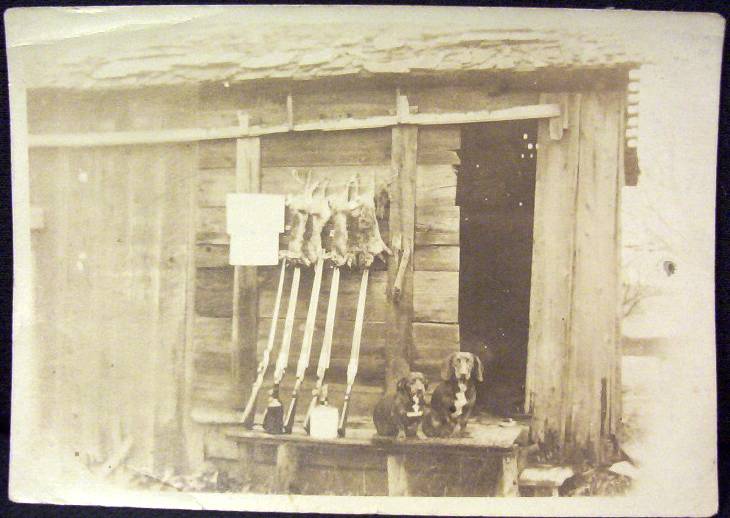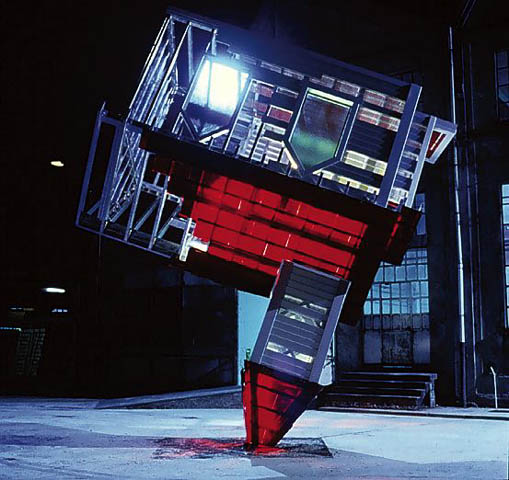Schwarz
View current page
...more recent posts
"In the early '50s Britain remained in a state of economic austerity that made the consumerist world appear exotic to British Pop artists. For the Americans, on the other hand, the commercial landscape was almost second nature, to be treated with a show of cool. Common to both groups, however, was the sense that consumerism had changed not only the look of things but the nature of appearance as such, and all Pop found its principal subject there: in the heightened visuality of semblance, in the charged iconicity of people and products (of people as products and vice versa) that a mass media of corporate images had produced. (1) The consumerist superficiality of signs and seriality of objects also had to affect architecture and urbanism as well as painting and sculpture. Accordingly, in Theory and Design in the First Machine Age (1960), Banham imagined a "Pop architecture as a radical updating of modern design under the changed conditions of a "Second Machine Age" in which "imageability" became the primary criterion. (2) Twelve years later, in Learning from Las Vegas (1972), Venturi and Scott Brown advocated a Pop architecture that would return this imageability to the built environment from which it arose. However, for the Venturis this imageability was more commercial than technological, and it was advanced not to update modern design but to displace it; here, then, Pop began to be recouped in terms of the postmodern. (3) The classic age of Pop can thus be framed by these two moments: between the retooling of modern architecture urged by Banham on the one hand and the founding of postmodern architecture prepared by the Venturis on the other."
-- hal foster / oct '04 artforum
warped space
"Beginning with agoraphobia and claustrophobia in the late nineteenth century, followed by shell shock and panic fear after World War I, phobias and anxiety came to be seen as the mental condition of modern life. They became incorporated into the media and arts, in particular the spatial arts of architecture, urbanism, and film. This "spatial warping" is now being reshaped by digitalization and virtual reality."
world police
toh carlisle project
how you say, Loews ?
ericofon telephones collected repaired and sold
bob dylan chronicles vol. 1

really crappy richard prince on warhol & himself piece in oct '04 artforum
paul rudolph and the sarasota school modernists
The Serpentine Gallery has commissioned the Dutch architectural practice MVRDV to design a spectacular Pavilion that will completely cover the entire height and width of the Serpentine Gallery on all four sides throughout the summer of 2005.
openhousenewyork
reusing big boxes
"Territories: Islands, Camps and Other States of Utopia is one of a series of publications from Kunst-Werke (KW) gallery in Berlin about the politics of space. It documents art works from an exhibition of the same title; it also compiles additional work by critics, architects, artists, and filmmakers. In the wake of documenta X and XI exhibitions of contemporary art in Kassel, Germany, books like these are evidence of recent collaborations that look for continued or enhanced political impact. More than installation art bounded by the gallery, these works are positioned on the front lines of global conflict. "
"Today “criticality” is under attack, seen by its critics as obsolete, as irrelevant, and/or as inhibiting design creativity. What is more, the criticisms that are increasingly frequently being made come from an interesting diversity of sources. To start to make sense of this emergent situation, we might try to locate the beginnings of the evident shift of opinion against this once-so-dominant theoretical discourse in architecture. One interesting precursor of current comment was an outburst by Rem Koolhaas at one of the series of conferences organized by ANY magazine, this one at the Canadian Centre for Architecture in 1994: “The problem with the prevailing discourse of architectural criticism,” complained Koolhaas, “is [the] inability to recognize there is in the deepest motivations of architecture something that cannot be critical.”(2) But if Koolhaas' complaint was a harbinger of things to come, probably the first frontal challenge to criticality was a text published by Michael Speaks, the Director of Graduate Studies at Southern California Institute of Architecture, in the American magazine Architectural Record in 2002.(3) In a startlingly revisionist text, Speaks explicitly abandoned the “resistance” that he had learned from his own teacher, Fredric Jameson, in favor of a model of a new, alternative, and efficaciously integrated architecture that would take its cues from contemporary business management practices.(4)"
HDM Fall 2004/Winter 2005, Number 21
Rising Ambitions, Expanding Terrain
Realism and Utopianism

as per artnet : A sculpture by Dennis Oppenheim proposed for the Stanford University campus in California has proved itself too controversial for Stanford president John Hennessy, who cancelled the commission after complaints from the school’s dean for religious life. The 25-foot-tall sculpture, called Device to Root Out Evil, is a latticework church that has been turned upside-down and stuck into the ground by its steeple; a version of the work was presented at the 1997 Venice Biennale. A Stanford alumnus, Oppenheim says the cancelled commission has cost him "$100,000 easy." The work "really did root out evil in a strange, circuitous way," Oppenheim told the "Stanford Daily." The president and others have conservative views and are afraid of a work of art, and now we know about it."
moma rethinks design collection / less tiff more kev
inconvienent evidense: iraqi prison photographs from abu ghraib
this show consists of twenty amature digital cellphone, digital camera and digital video still images taken from the internet
Chief curator Brian Wallis and director Willis Hartshorn of the International Center of Photography discuss their current exhibit with Leonard Lopate.
The Skyscraper Museum
Frank Lloyd Wright: The Vertical Dimension
October 6, 2004 - January 9, 2005
The first comprehensive examination of the high-rise designs of America’s foremost architect, Frank Lloyd Wright: The Vertical Dimension, examines Wright’s abiding interest in the re-invention of the tall building. Over the course of his long career, Wright designed a dozen high-rise buildings of which only two were built--the Johnson Research Tower in Racine, Wisconsin (1944), and the Price Tower in Bartlesville, Oklahoma (1952-56). With these designs, Wright proposed a new structure for the skyscraper, challenged prevailing building practices with his use of materials, and proposed new directions in high-rise living.
special thanks to selma
soul on top
On this 1969 recording, Soul Brother #1 makes no secret of his love of jazz — and his own phenomenal gifts as an improviser. In collaboration with Louie Bellson, one of jazz’s most impressive drummers and one of its most expressive arrangers, Oliver Nelson, Brown tears through jazz standards and gives his own hits a new twist.
port authority terminates terminal five show
via selma
